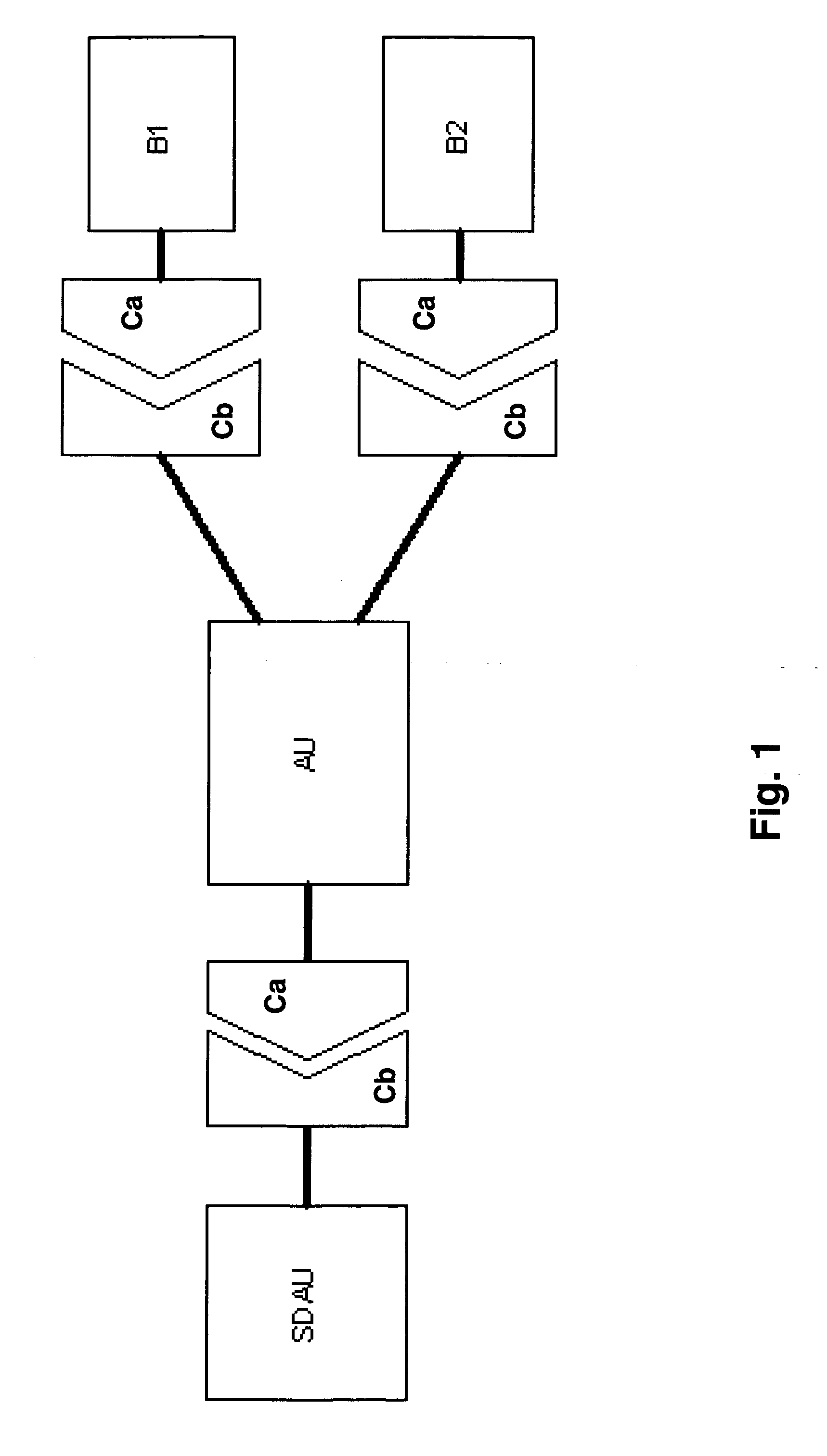Apparatus and method for performing nerve conduction studies with multiple neuromuscular electrodes
a nerve conduction and electrode technology, applied in the field of peripheral nervous system function assessment, can solve the problems of pns disease detection and monitoring based on outdated and inaccurate clinical techniques, difficult to diagnose and stage the severity of pns dysfunction based on symptoms alone, and high cost of associated economic annual cost, etc., to achieve automatic, rapid and efficient assessment of pns function.
- Summary
- Abstract
- Description
- Claims
- Application Information
AI Technical Summary
Benefits of technology
Problems solved by technology
Method used
Image
Examples
Embodiment Construction
[0036] In one embodiment of the present invention, and looking now at FIG. 1, the apparatus for performing nerve conduction studies comprises a Stimulation and Data Acquisition Unit SDAU, an adaptor unit AU, and two or more neuromuscular electrodes B1, B2. The adaptor unit AU provides a “smart” connection between the neuromuscular electrodes B1, B2 and the stimulation and data acquisition unit SDAU.
Neuromuscular Electrodes B1, B2
[0037] Neuromuscular electrodes B1, B2 (see FIGS. 2 and 3) contain stimulation sites for nerve stimulation and bioelectrical signal detection in an integrated package. The biosensor of neuromuscular electrodes B1, B2 may comprise one or more flexible layers. In addition, a layer of medical grade adhesive may be provided so as to ensure that once the biosensor is placed on the skin, it remains in place. The electrodes are preferably constructed by cutting out wells in the adhesive and filling them with conducting gel. One or more flexible layers of electric...
PUM
 Login to View More
Login to View More Abstract
Description
Claims
Application Information
 Login to View More
Login to View More - R&D
- Intellectual Property
- Life Sciences
- Materials
- Tech Scout
- Unparalleled Data Quality
- Higher Quality Content
- 60% Fewer Hallucinations
Browse by: Latest US Patents, China's latest patents, Technical Efficacy Thesaurus, Application Domain, Technology Topic, Popular Technical Reports.
© 2025 PatSnap. All rights reserved.Legal|Privacy policy|Modern Slavery Act Transparency Statement|Sitemap|About US| Contact US: help@patsnap.com



